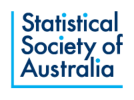Science & Technology Australia - Media Release
Australia must apply the same expert science-led approach to climate change as it has to the coronavirus pandemic, the nation’s peak body for science and technology has urged.
Science & Technology Australia says the nation’s success at navigating the pandemic and managing risks proactively is a model for how to tackle climate risk and transition to a net-zero economy.
STA President Associate Professor Jeremy Brownlie said Australia’s COVID strategy was among the best in the world, using scientific evidence to inform policy, save jobs and protect the public.
“The last year has clearly demonstrated that to protect lives and livelihoods, we need to listen to the scientific evidence and use it to guide policy,” he said.
“That’s a lesson we also need to apply to the increasingly urgent challenge of climate change.”
“The terrifying bushfire season last summer in Australia was a sign of things to come.”
“If we don’t transition to a net zero emissions economy, we’ll see further lives lost, lasting damage to our unique flora and fauna, and more local communities devastated by fire and drought.”
“An orderly transition to a net-zero economy will save both lives and livelihoods.”
STA is the peak body representing more than 88,000 scientists and technologists in Australia. Its membership base includes geologists and mining engineers as well as scientists working in renewable energy and environmental sciences.
STA has made a submission to an inquiry into two climate change Bills currently before federal Parliament.
Associate Professor Brownlie said the Bills propose a long-term national approach to the issue and an orderly transition to a net-zero economy.
“These Bills enshrine an evidence-based approach to climate change. That approach has been the key to Australia’s success in tackling COVID-19,” he said.
“It particularly recognises the need for an orderly transition that supports workers in industries as they move to net-zero carbon emissions.”
Recent research from Deloitte highlighted stronger action on climate change could add $680 billion to the Australian economy and create 250,000 new jobs by 2070.
Associate Professor Brownlie said business, scientists, and investors are increasingly united in calling for stronger climate action and further proactive management of climate risk.
This boost to the overall national economy modelled by Deloitte need not come at the cost of local communities and individuals.
“A move to net-zero emissions does not have to result in job losses and does not mean an end to mining or Australia’s resources sector.,” he said.
“While there will be changes to fossil fuel industries, a transition that safeguards jobs is not only possible – it’s achievable,” he said.
“For a country as rich in renewables as Australia, climate change can be an opportunity to open up new markets and new technologies.”
“Climate change is a major challenge, but as the pandemic has demonstrated, if we have science at the heart of our response, Australia can meet this challenge.”
Media contacts: Science & Technology Australia: media inquiries: Martyn Pearce – 0432 606 828
